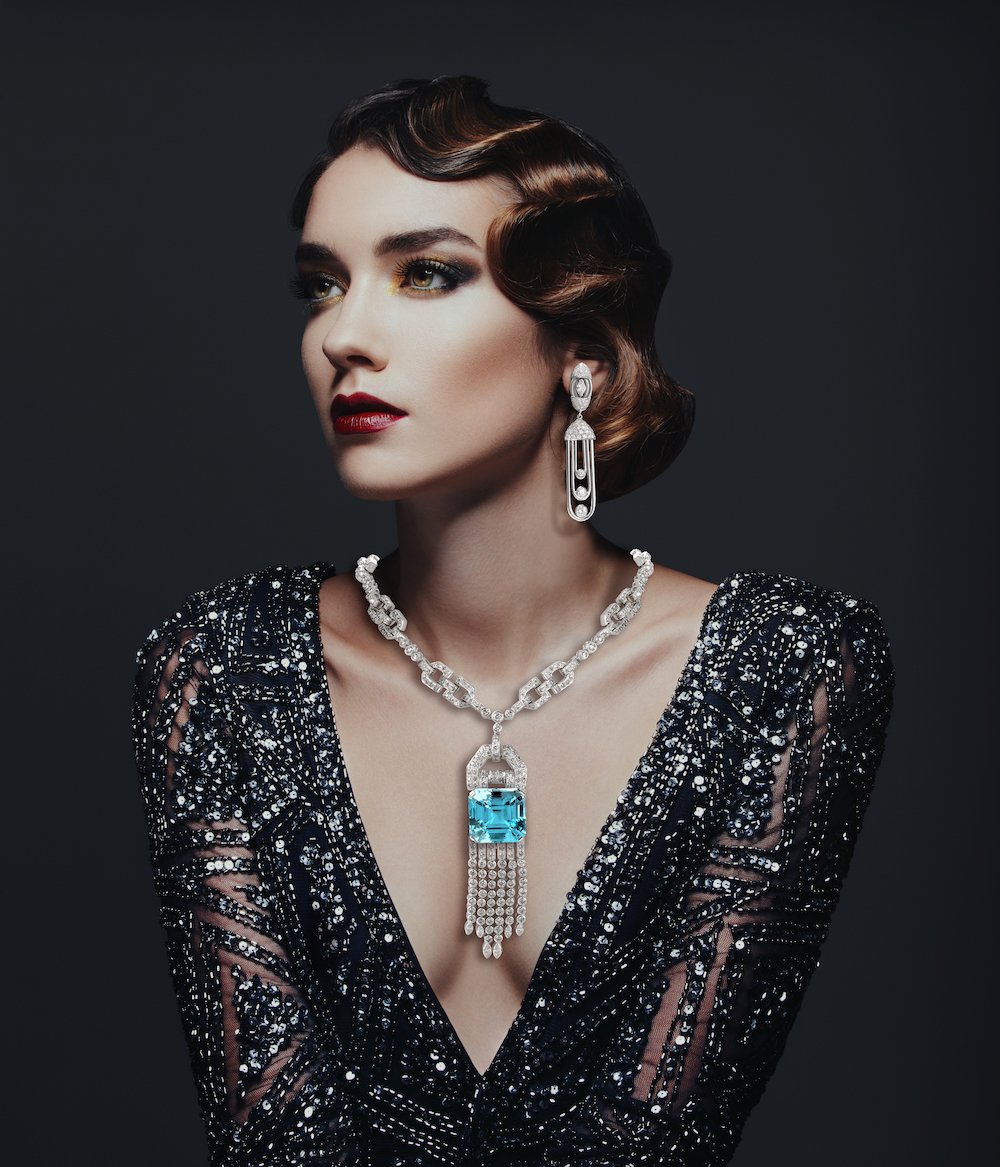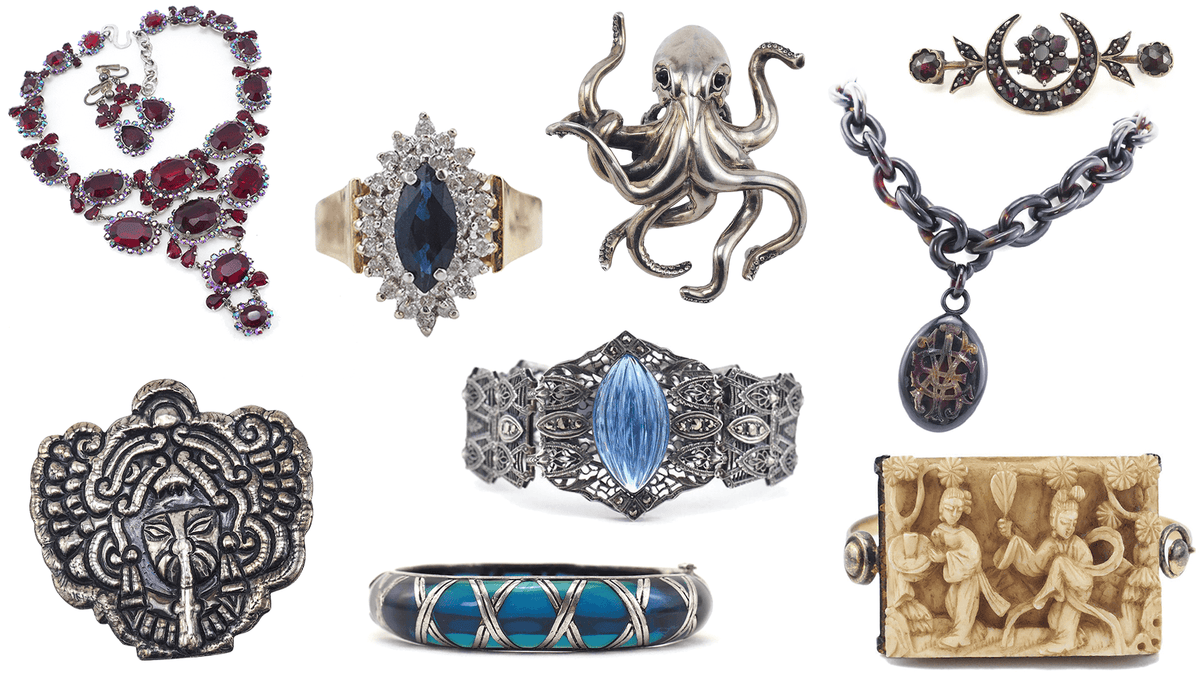Reveal the Rich History Behind Stunning Estate Jewelry Collections
The expedition of estate fashion jewelry collections provides a distinct window right into background, exposing the elaborate relationship in between workmanship and cultural evolution. What keys might these collections still hold?
The Origins of Estate Precious Jewelry
Just how did estate fashion jewelry concerned embody the abundant history and artistry of past ages? The origins of estate precious jewelry can be traced back to various durations of craftsmanship, where fashion jewelry was not simply an accessory yet a reflection of societal worths, technological innovations, and creative expressions. Each piece narrates, often connected with the lives of their previous owners, encapsulating individual stories alongside historical contexts.
The term "estate precious jewelry" usually refers to used items, often from substantial ages such as Victorian, Art Nouveau, or Art Deco. These pieces were created with thorough interest to detail, showcasing the skill of artisans who made use of products like gold, silver, and valuable gems. Unlike modern precious jewelry, estate pieces commonly include special styles that highlight the visual appeals of their time, thus acting as substantial links to the past.

Notable Layout Eras
Throughout background, numerous significant layout periods have actually substantially influenced the advancement of estate precious jewelry, each characterized by distinct designs, materials, and social contexts. The Georgian period (1714-1837) noted the start of detailed designs, frequently including nature-inspired motifs and the use of materials like gold, silver, and gemstones established in fancy settings. Following this, the Victorian era (1837-1901) introduced enchanting themes, with sentimental jewelry and cutting-edge strategies such as making use of enamel and cameos.
The Art Nouveau period (1890-1910) commemorated organic kinds and the charm of nature, using products like opals and pearls in flowing layouts. This was succeeded by the Art Deco period (1920-1939), which accepted geometric patterns, strong shades, and lavish products such as platinum and diamonds, mirroring the modernist spirit of the moment.
The Mid-Century Modern era (1940-1960) showcased streamlined layouts and the use of unique products, highlighting minimalism and capability. Each of these periods not only reflects the imaginative movements of their time but likewise encapsulates the social worths and technical innovations that shaped fashion jewelry style, making them an interesting subject for historians and collectors alike.

Famous Estate Fashion Jewelry Collections
The abundant history of estate fashion jewelry is perfectly exemplified by a number of distinguished collections that display the virtuosity and craftsmanship from various layout ages. Among one of the most well-known is the Cartier Collection, which mirrors the high-end and advancement of the legendary French jeweler. Pieces from this collection often include elaborate designs and elegant gemstones, highlighting the brand name's dedication to great craftsmanship.
Another remarkable collection is the Duchess of Windsor's fashion jewelry collection, which consists of several unique items, consisting of the famous "Windsor" bracelet. This collection not only exemplifies the style of the Art Deco duration yet additionally lugs a rich narrative of love and loss, as it belonged to Wallis Simpson, that notoriously wed Edward VIII.
The collection of the late starlet Elizabeth Taylor likewise stands apart in the world of estate precious jewelry. With various items developed by popular jewelers like Bulgari and Cartier, her collection personifies beauty and class, highlighting her personal design and fondness for unique gemstones.
These popular estate fashion jewelry collections act as a testimony to the enduring allure of fine jewelry, supplying insight into the creative and social activities that formed their creation.
The Social Value
Estate fashion jewelry collections hold extensive cultural value, reflecting not just the visual values of their corresponding eras but additionally the social and historical contexts in which they were produced. Each piece usually symbolizes the craftsmanship and creative patterns of its time, showcasing the evolution of style and modern technology in fashion jewelry production.
Moreover, these collections work as concrete web links to social practices and routines. Wedding celebration bands and treasure brooches may symbolize love and familial bonds, while items decorated with specific gemstones can stand for local or social identifications. The materials used-- whether gold, silver, or precious stones-- often tell stories of trade, exploration, and the wide range accumulation of cultures.
Additionally, estate jewelry can work as historical artifacts, providing understandings into the lives of individuals and the social norms they navigated. The way jewelry was put on and valued can reveal much concerning sex roles, condition, and individual expression within varying social landscapes. As such, estate precious jewelry transcends simple decoration, working as an abundant narrative of human experience, creativity, and cultural heritage, inviting modern audiences to engage with the past in a meaningful way.
Caring for Your Estate Pieces
Caring for estate precious jewelry items calls for a thoughtful method to ensure their durability and preserve page their special attributes. To keep the elegance of these treasures, it is essential to handle them with treatment. Constantly tidy estate precious jewelry utilizing a soft, lint-free cloth after each wear to remove oils and dust. For much deeper cleaning, utilize a light soap solution and a soft brush, taking care to avoid severe chemicals that may harm fragile materials.
Storage space is just as vital; shop pieces independently in a fabric-lined box to avoid tangling and damaging. Think about making use of anti-tarnish pouches or cloths for silver products, as this aids to reduce the tarnishing process. In addition, avoid subjecting jewelry to extreme wetness, extreme temperature levels, or straight visit this web-site sunshine, which can detrimentally influence steels and gems.
Routine evaluations are crucial. Look for loosened rocks, used clasps, or damaged settings, and seek professional repair work when needed. Consulting a jewelry expert experienced in vintage or antique items can offer customized care options. By implementing these practices, collection agencies can protect their estate precious jewelry's aesthetic and historical worth, ensuring these items remain to be cherished for generations ahead.
Final Thought
To conclude, the expedition of estate jewelry collections exposes a tapestry of creative expression and cultural importance, mirroring the values and aesthetics of different historical periods. Each item functions as a testimony to outstanding craftsmanship and the stories of those that once had them. Understanding the origins, layout ages, and significant collections improves appreciation for these artefacts, emphasizing their duty in protecting social heritage and motivating continued stewardship and care for these impressive treasures.
The exploration of estate jewelry collections provides a special window right into history, disclosing the elaborate connection between craftsmanship and cultural evolution. The origins of estate jewelry can be traced back to numerous periods view it now of workmanship, where fashion jewelry was not merely an accessory but a reflection of societal values, technical developments, and creative expressions.The term "estate precious jewelry" commonly refers to previously owned pieces, frequently from substantial periods such as Victorian, Art Nouveau, or Art Deco.The rich history of estate jewelry is wonderfully exhibited by numerous popular collections that showcase the creativity and craftsmanship from different design ages.In conclusion, the exploration of estate jewelry collections reveals a tapestry of imaginative expression and social relevance, mirroring the values and looks of numerous historic durations.